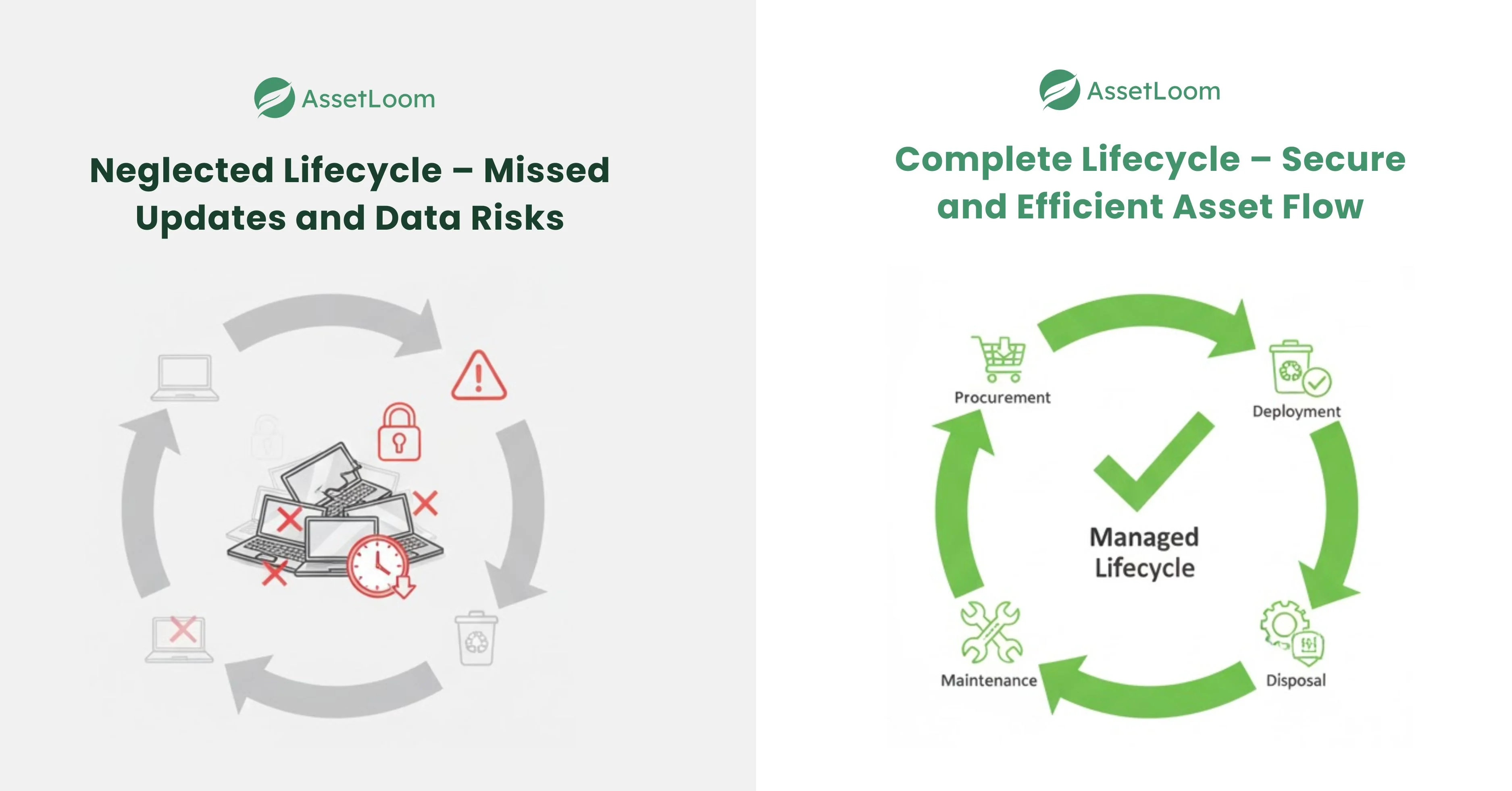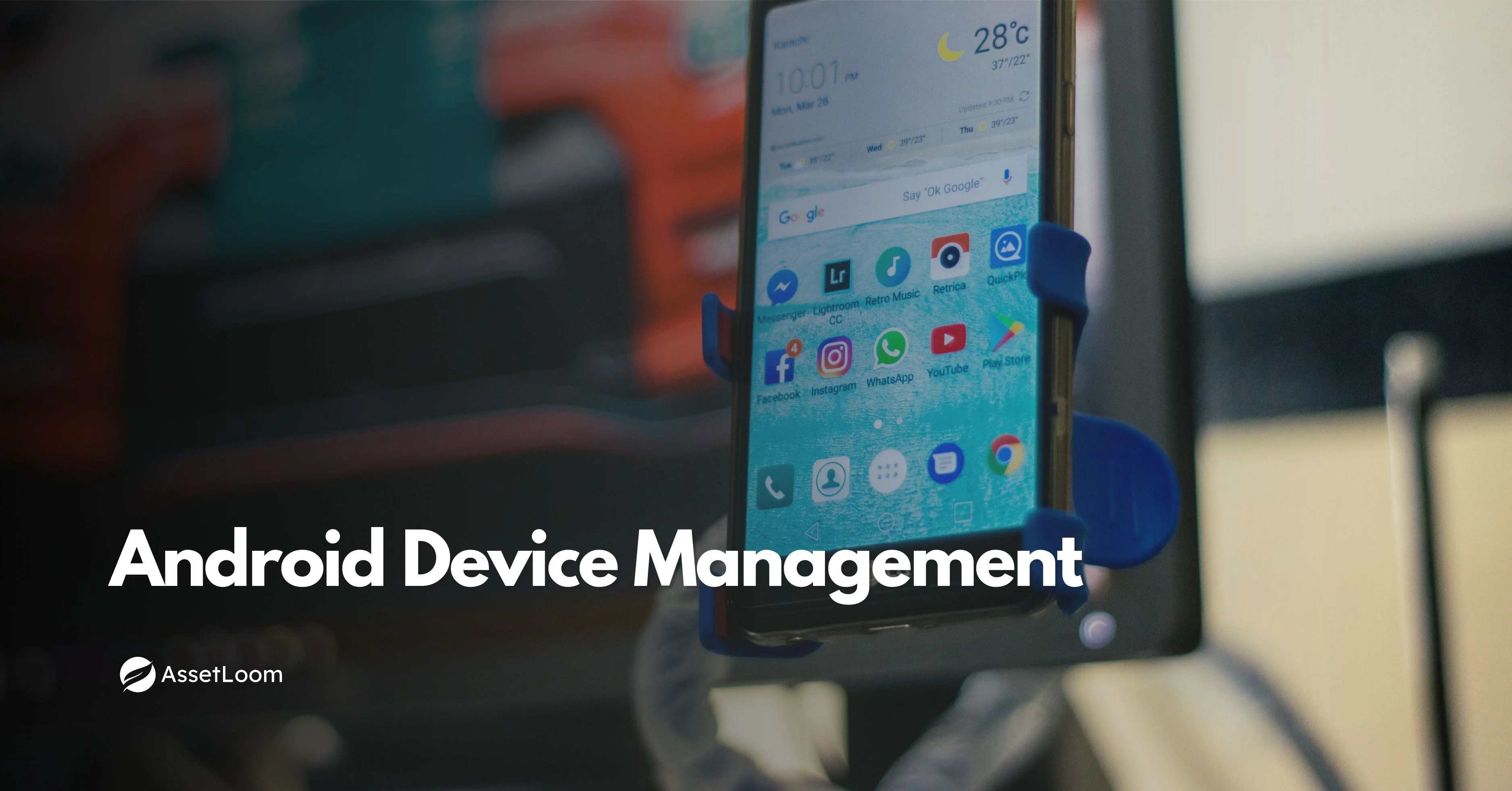5 Poor IT Inventory Management Examples and Lessons
Poor IT Inventory Management Examples show how tracking errors, missing data, and poor planning lead to higher costs and inefficiency in IT operations.
Poor IT inventory management creates problems that many teams know too well. A laptop goes missing after an employee leaves. A monitor sits unused in storage because no one remembers it’s there. Someone buys new software even though there are unused licenses.
These small mistakes don’t seem serious at first. But over time, they lead to real losses — wasted money, lost time, and security risks.
In this article, we’ll look at five examples of poor IT inventory management and what each one teaches us. These stories show how small issues can turn into big headaches — and how simple, consistent tracking can make a big difference.
Read also: IT Inventory Management: Best Practices for IT, Finance, Security
1. Manual, Error-Prone Tracking Processes
What Usually Happens
Many organizations still rely on spreadsheets or manual logs to track their IT assets. It may seem simple at first — a shared Excel file where staff record laptops, monitors, or software purchases. But as the company grows, keeping that list accurate becomes almost impossible.
![]()
Over time, people forget to update the file. Some enter the wrong details. Others skip entries entirely. The result is a long list full of errors and missing information.
Common Problems
- Duplicate records: A laptop may be listed twice under different users.
- Wrong details: Serial numbers or purchase dates are typed incorrectly.
- Missed updates: When an employee leaves, their device isn’t marked as returned.
- Outdated data: Old equipment remains listed long after it’s been disposed of.
These small errors add up. When the IT team checks inventory for an audit or replacement plan, they find numbers that don’t match what’s actually in use.
Real Example
A mid-sized company had 300 employees and tracked assets in one spreadsheet. Each department updated its own copy, then sent it to IT at the end of every month. When they ran an audit, they found:
- 27 laptops listed that no one could locate
- 11 monitors marked as “in use” even though they were recycled
- 8 devices purchased but never recorded
The IT manager spent weeks trying to confirm which assets still existed. During that time, employees waited for replacements, and the finance team couldn’t close their budget reports.
Why It Causes Trouble
- Time wasted: Staff spend hours checking physical items against broken lists.
- Inaccurate reports: Management makes budget or purchase decisions based on wrong data.
- Security risks: Missing devices may still hold company data.
- Audit stress: Discrepancies cause failed audits or compliance issues.
When tracking depends on memory and manual updates, accuracy slowly disappears.
Lesson Learned
Automation fixes most of these problems. Simple tools can update inventory automatically every time a device connects to the network or gets scanned.
Better approaches include:
- Using barcode or QR code labels for quick updates
- Adopting RFID scanners for large inventories
- Syncing asset data with HR or procurement systems
- Scheduling automatic reminders for updates and audits
With automation, IT teams always know what assets exist, where they are, and who is responsible for them.
2. Lack of Real-Time Visibility and “Ghost Assets”
What Usually Happens
As companies grow, their IT assets spread across offices, remote workers, and storage rooms. Over time, it becomes harder to know where everything is or who’s using it. When there’s no real-time tracking system, teams rely on outdated records. Some devices appear in the system but can’t be found — these are often called “ghost assets.”

A ghost asset is an item listed in your records that no longer exists or can’t be located. The opposite also happens — new devices are used every day but never added to the list. Both problems lead to confusion and wasted money.
Common Problems
- Outdated records: An employee leaves, but their laptop stays marked as “assigned.”
- Unrecorded equipment: Devices sent to remote workers never make it into the system.
- Storage chaos: Old computers sit in boxes but still appear as “active” assets.
- Audit failures: When an audit happens, the numbers don’t match the physical count.
Real Example
A global marketing agency had offices in three cities and many remote employees. They used an internal spreadsheet to record laptops and monitors. During a routine check, they discovered:
- 18 laptops listed as “in use” were missing
- 9 devices had been disposed of months ago but were still on record
- Several new hires received laptops that were never logged
The finance team realized they had paid insurance and maintenance fees for equipment that no longer existed. At the same time, IT couldn’t confirm how many spare laptops were available for new hires.
This confusion delayed onboarding, caused budget errors, and left the team frustrated.
Why It Causes Trouble
- Lost assets: Equipment disappears, and no one knows who had it last.
- Wasted spending: Companies pay for maintenance or insurance on ghost assets.
- Audit risks: Missing devices raise red flags during financial or compliance checks.
- Poor planning: IT can’t forecast hardware needs accurately.
The longer the system goes unchecked, the worse it gets. Teams lose trust in their data and spend extra time verifying what’s real.
Lesson Learned
Centralize your asset tracking in one platform. Real-time visibility helps teams see every asset’s location, owner, and status instantly.
Smart tracking methods include:
- Using cloud-based IT asset management systems
- Scanning assets with RFID or QR codes during check-in and check-out
- Running automatic network discovery to detect all connected devices
- Setting reminders for physical audits every quarter
When all asset data lives in one place, ghost assets disappear. Everyone — IT, finance, and management — sees the same, accurate information.
3. Neglecting the Entire IT Asset Lifecycle
What Usually Happens
Many teams focus only on buying and deploying new IT assets. Once the devices are in use, they’re often forgotten until they break or need replacing. This happens because tracking stops after procurement. The rest of the asset’s journey — maintenance, upgrades, and disposal — IT Asset Lifecycle gets little attention.

When lifecycle management is ignored, devices run outdated software, warranties expire unnoticed, and old equipment piles up in storage with sensitive data still inside.
Common Problems
- No maintenance tracking: Devices don’t get regular updates or servicing.
- Missed warranty renewals: Repairs or replacements become more expensive.
- Unsecured disposals: Retired devices are thrown away without proper data wiping.
- Inaccurate value tracking: Assets are kept long after they lose performance or efficiency.
Ignoring these steps shortens the life of assets and increases risk.
Real Example
A healthcare organization purchased hundreds of laptops and tablets for medical staff. Once deployed, the IT team didn’t maintain a schedule for updates or security patches. Within a year, several devices started failing because of outdated software. Some were still under warranty, but no one knew — the warranty data was never recorded.
Later, during a compliance audit, the team discovered that old tablets with patient data had been recycled without secure data wiping. This led to a major security concern and extra costs for investigation and recovery.
Why It Causes Trouble
- Security risks: Old devices may still store sensitive company or customer data.
- Higher repair costs: Missing warranty renewals mean paying full price for repairs.
- Shorter asset lifespan: Lack of maintenance leads to early breakdowns.
- Regulatory issues: Improper disposal can violate data protection laws.
When no one monitors the asset lifecycle, small oversights can become serious problems.
Lesson Learned
Think of IT asset management as a full journey, not a one-time setup. Every asset has a lifecycle — from planning and purchase to maintenance and disposal. Tracking each step keeps assets safe, efficient, and compliant.
Best practices include:
- Creating a maintenance and update schedule for all devices
- Recording warranty and renewal dates in your tracking system
- Using secure methods to wipe data before disposal
- Reviewing asset performance regularly to plan replacements early
Lifecycle tracking helps reduce downtime, improve budgeting, and protect company data.
4. Inaccurate Software License Management
What Usually Happens
Software License Management often gets less attention than managing physical devices. Many companies buy licenses, install the software, and move on. Months later, no one remembers how many licenses are active, who’s using them, or when they expire.

This problem usually starts small but grows fast — especially when multiple teams install software on their own. Before long, there’s no clear record of what’s installed or whether it’s legal to use.
Common Problems
- Expired licenses: Software keeps running, but the agreement has ended.
- Over-licensing: Companies pay for more licenses than they actually use.
- Under-licensing: Not enough licenses for all users, creating compliance risks.
- Untracked renewals: Renewal dates are missed, causing unexpected downtime.
- Shadow IT: Employees install tools that aren’t approved or recorded.
These issues make it hard to manage costs and stay compliant with vendor contracts.
Real Example
A finance company subscribed to several software tools — Microsoft 365, Adobe, and project management apps. Each department handled its own renewals, but no central list existed. When a software audit arrived, the company discovered:
- They had 120 paid licenses for Adobe but only 80 active users.
- 15 employees were using an unlicensed project management tool.
- Several renewals had been charged twice because of duplicate accounts.
The company ended up paying thousands in unnecessary fees and had to scramble to fix compliance gaps before the audit closed.
Why It Causes Trouble
- Financial loss: Over-purchasing licenses wastes budget.
- Legal risk: Using unlicensed software can lead to penalties.
- Downtime: Missed renewals can disrupt work if software stops working.
- Poor visibility: Teams don’t know what tools they already have.
When software data is spread across departments, it becomes impossible to track everything accurately.
Lesson Learned
Treat software like any other asset — it needs tracking, updates, and renewal management. Centralize all license information in one place so IT can see usage, expiry dates, and costs clearly.
Smart practices include:
- Keeping a digital inventory of all software tools and users
- Setting alerts for renewal or expiration dates
- Tracking software usage to identify unused licenses
- Reviewing contracts regularly to avoid overpaying vendors
- Restricting new installations to approved and tracked software only
These steps keep license management simple, legal, and cost-efficient.
5. Reactive IT Maintenance and Procurement
What Usually Happens
Many IT teams fix problems only after something breaks. A laptop stops working, a printer runs out of parts, or a server crashes — then the repair or replacement begins. This is called a reactive approach, and it usually means teams spend more time firefighting than planning.

The same happens with new equipment. Instead of forecasting needs, companies buy devices at the last minute when new employees join or when something fails. These rushed decisions often lead to higher costs and downtime.
Common Problems
- Unplanned purchases: Equipment is bought in a hurry, often at a higher price.
- Downtime: Teams can’t work while waiting for replacements.
- Overloaded IT staff: Constant emergency repairs pull focus from strategic work.
- Shorter asset lifespan: Devices aren’t serviced regularly, so they fail sooner.
- Inconsistent budgets: Spending spikes suddenly instead of following a plan.
This cycle repeats because there’s no schedule for maintenance or long-term planning.
Real Example
A logistics company used more than 400 handheld scanners and tablets across its warehouses. Maintenance was only done when a device broke. Within a year, over 60 devices failed at the same time during peak season. Since there were no spare units and replacements had to be ordered urgently, shipping operations slowed down for days.
The team also realized they had no visibility into warranty coverage — many broken devices could have been repaired for free if the information had been tracked. Instead, they spent extra on replacements and lost time waiting for new hardware.
Why It Causes Trouble
- Unexpected downtime: Work stops when key equipment fails.
- Higher costs: Urgent purchases and repairs are more expensive.
- Wasted warranty value: Repairs that could be covered end up paid out of pocket.
- Low productivity: IT teams spend more time reacting than improving systems.
A reactive system feels like it saves time in the short term but costs much more in the long run.
Lesson Learned
Switch from a reactive approach to a proactive one. Regular maintenance and planning keep IT assets in good shape and prevent costly surprises.
Helpful steps include:
- Setting preventive maintenance schedules for hardware
- Tracking warranty and service dates in your asset system
- Keeping a small stock of spare devices for quick replacements
- Using data to forecast hardware needs for new hires or expansions
- Reviewing performance reports to replace assets before they fail
Proactive management helps teams plan better, reduce downtime, and control costs.
Conclusion
Poor IT inventory management doesn’t just cause lost devices or messy spreadsheets. It creates real problems for cost, security, and productivity. The good news is that each example in this article shows how these issues can be avoided.
By learning from common mistakes like manual tracking, missing visibility, ignoring lifecycles, losing track of software, and reacting too late, any team can build a more reliable system.
Start small. Record every asset in one place, schedule regular updates, and plan ahead instead of fixing problems after they appear. Over time, these simple habits lead to better control, lower costs, and fewer surprises. Good inventory management is not about fancy tools. It is about clear records, consistent habits, and accountability across your team.

Related Blogs
Subscribe for Expert Tips and Updates
Receive the latest news from AssetLoom, right in your inbox.


